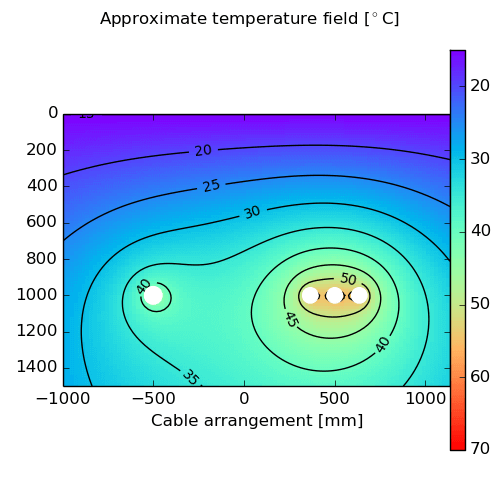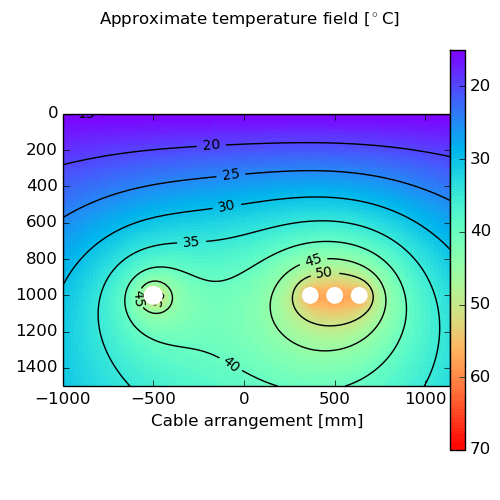The method described in the IEC 60287 standard to calculate buried cables where partial drying-out of the soil occurs is limited to a single isolated cable or circuit only. Cableizer introduced a calculation method for multiple systems according to a method by VDE.
Posted 2015-11-02
Categories: New feature, Theory
The newest edition of the IEC 60287-1-1 from 2014 has still a limitation when it comes to calculate buried cables where partial drying-out of the soil occurs. The method shall be applied to a single isolated cable or circuit only, laid at conventional depths. The method is based on a simple two-zone approximate physical model of the soil where the zone adjacent to the cable is dried out whilst the other zone retains the site's thermal resistivity. This method was described in Electra No 104, 1966. This paper addressed the situation when more than one cable is present and demonstrated the method on a single multi-core cable and a single circuit of three single core cables in flat formation.
Mr. Franz Winkler wrote a comprehensive report about the current-carrying capacity of buried cables under consideration of drying-out of soil and daily load-cycles. This report was published by the VDE in 1978. The report uses the same two-zone method to calculate the effect of partially dried-out soil. It combines it with the two-zone method used to calculate the current-carrying capacity with a load-loss factor smaller than 1.0. The report also describes the calculation of the isothermal curves for multiple cables, not limited to one system.
Cableizer implemented the same formulas so the user can now enter a separate load-factor for each system plus consider drying-out of the soil at the same time. Following limitations apply:
The following example was calculated with one system in trefoil (left side) and a second system flat spaced (right side). Please note for example the 40°C isoline.
| without drying-out of soil | with drying-out of soil |
|---|---|
 Fig. 1 Approximate temperature field without drying-out of soil |
 Fig. 2 Approximate temperature field with drying-out of soil |